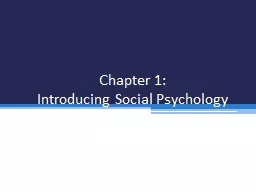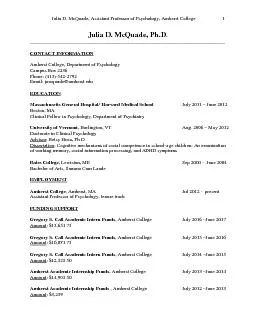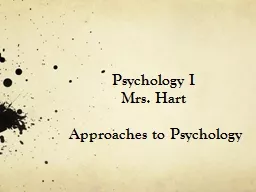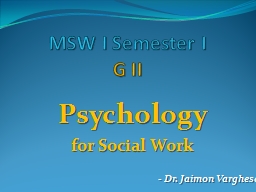PPT-Chapter 1: Introducing Social Psychology
Author : enkanaum | Published Date : 2020-06-20
Learning Objectives What do social psychologists study How old is the discipline of social psychology Why was World War II so important in the development of
Presentation Embed Code
Download Presentation
Download Presentation The PPT/PDF document "Chapter 1: Introducing Social Psycholog..." is the property of its rightful owner. Permission is granted to download and print the materials on this website for personal, non-commercial use only, and to display it on your personal computer provided you do not modify the materials and that you retain all copyright notices contained in the materials. By downloading content from our website, you accept the terms of this agreement.
Chapter 1: Introducing Social Psychology: Transcript
Download Rules Of Document
"Chapter 1: Introducing Social Psychology"The content belongs to its owner. You may download and print it for personal use, without modification, and keep all copyright notices. By downloading, you agree to these terms.
Related Documents














